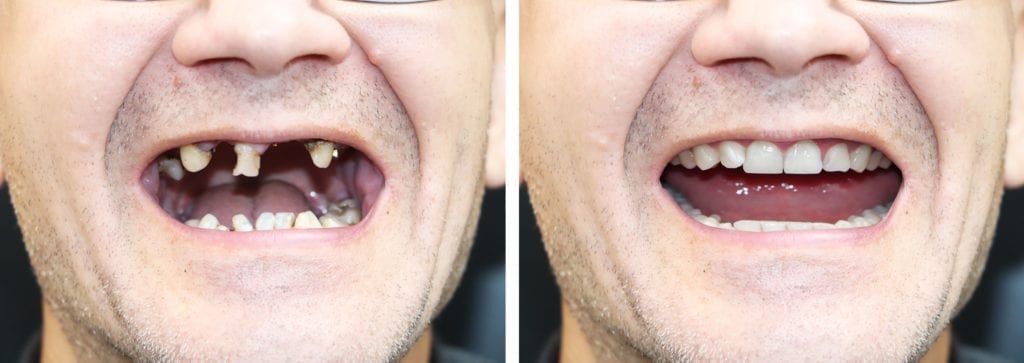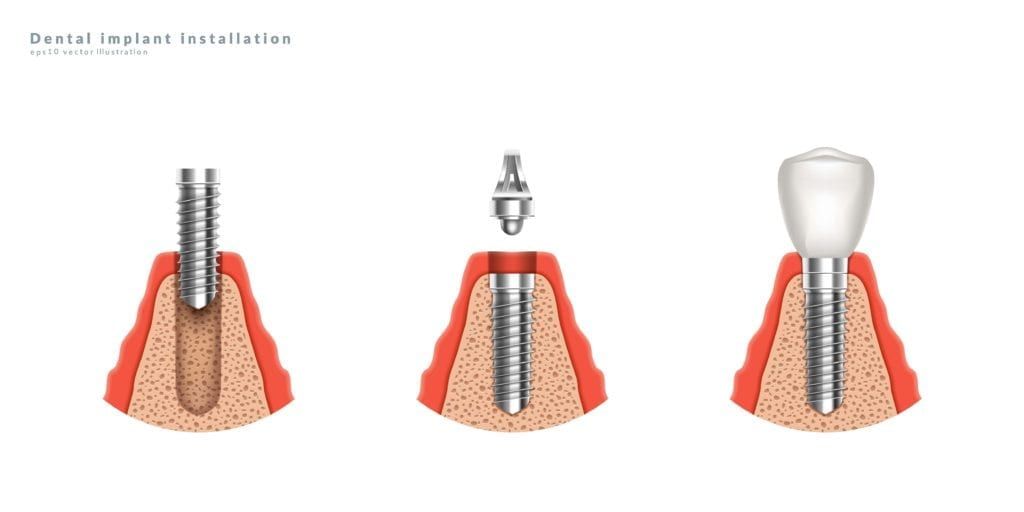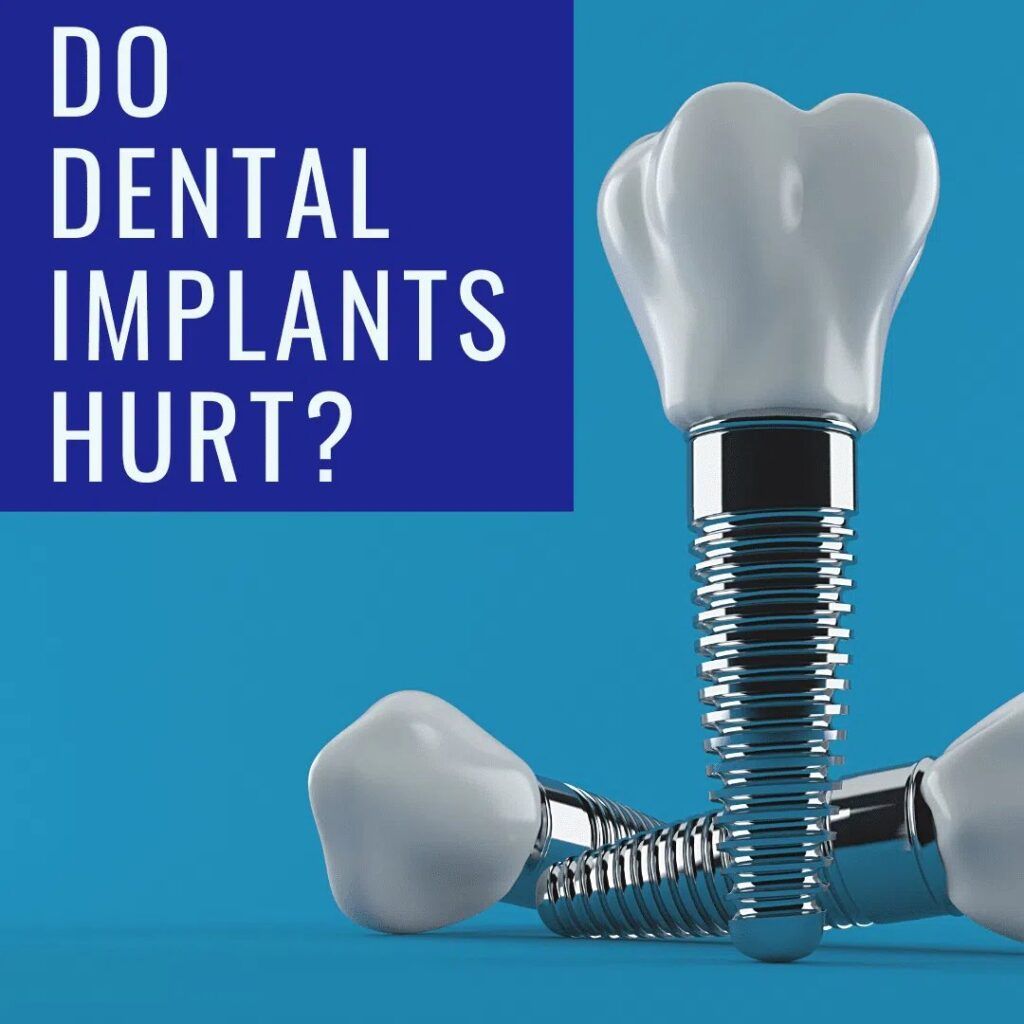The American College of Prosthodontics notes that as many as 120 million Americans are missing at least one tooth, while 36 million Americans are missing all their teeth. As the average life expectancy continues to rise and outlive the lifespan of our teeth, this number is expected to increase. Luckily, modern dentistry offers a solution to the problem of edentulism, or toothlessness.
For both partially or completely edentulous patients, dental implants are an ideal way to replace one or more missing teeth, while also maintaining the function of natural teeth, as well as the jawbone. In cases where a patient is completely toothless or if the majority of their teeth are severely decayed and are in need of extraction, a full mouth reconstruction is often recommended.

In order to completely reconstruct an entire mouthful of teeth, all-on-four dental implants are used. All-on-four implants, sometimes referred to as implant-supported dentures, use a series of four dental implants placed strategically in the jawbone to support an entire arch of teeth. For a full mouth reconstruction, both the upper and lower arch will need to be restored.
While the term “full mouth reconstruction” may sound intimidating to some, the process for placing all-on-four dentures is not as difficult as you may think. In fact, getting all-on-four dental implants is as easy as 1-2-3!
Step #1: Consultation
The first step to getting all-on-four implants is to schedule a consultation with an implant dentist so they can evaluate your case. During a dental implant consultation, you can expect to have an examination of your mouth, as well as dental x-rays and a possible CBCT scan. The visual exam allows your implant dentist to assess the condition of your gums and any remaining teeth, while the dental x-rays and CBCT scan allow for a look at the bone and other underlying structures. Your implant dentist will also discuss your medical history, current medications, and any current health problems to determine if you are an ideal candidate for oral surgery.
Towards the end of your consultation, your dentist will present you with their treatment plan. If you decide to proceed with treatment, your implant placement procedure will be scheduled for a later date. In some cases, a pre-op appointment may also be scheduled to discuss dental sedation, how to prepare, and to go over any prescriptions needed.
Step# 2: Implant Placement
The day of your appointment, you will arrive at the office dressed in comfortable clothes and closed-toed shoes. You will also need to be sure that you have a driver to take you home after the procedure since you will not be able to drive due to the sedation. Your implant dentist will prepare you for the procedure by administering dental sedation.

Once you have been sedated, your dentist will begin by extracting any remaining teeth. Then, they will make a small incision in your gums to access the jawbone and shape the socket where the implants will be placed. The implant screw will then be placed into the jawbone and the abutment, or connector, will be attached. In some cases, your dentist may also perform a bone graft, which places bone material around the implant. Finally, the gums will be sutured up around the abutment so that it is visible above the gum line. Four dental implants will be placed in the upper arch and an additional four implants will be placed in the lower arch. These implants will be used to support a temporary denture while the implant sites heal.
Step #3: Recovery
After your dental implants have been placed, the final step is to allow them to heal properly. Immediately following your procedure, you may experience some minor soreness and swelling. Most dental implant patients experience minimal postoperative discomfort and it can be managed with over the counter pain medications.
In order for your dental implants to heal successfully, they must undergo a 3-6 month process called osseointegration in which new bone growth around the implant fuses it in place. To allow this to happen, your dentist will place you on a temporary soft foods diet to avoid placing too much force on your newly placed implants. If too much force is exerted on your implants too soon, this can cause them to become loose or to heal incorrectly. Only after osseointegration has occurred is it possible for your dentist to start work on your permanent dentures.
As you can see, smile makeovers completed with complete dentures and dental implants is as easy as 1-2-3! With the first step as the consultation, the second step as implant placement, and the third step being recovery, your new smile is just around the corner. Overall, while many people believe the dental implant process is complicated, the actual process is much simpler in reality.

